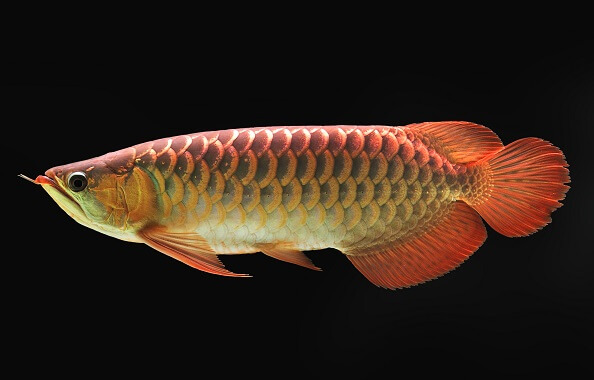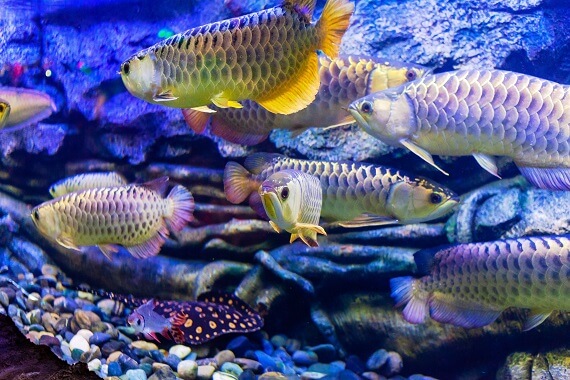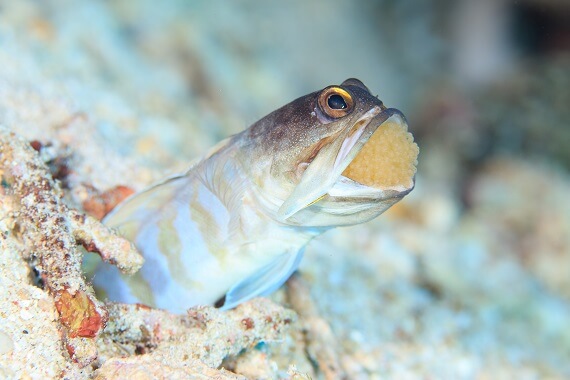
Arowanas are long, elongated fish belonging to the family Osteoglossidae. These fish have a narrow body that gives them an almost eel-like appearance. Arowanas are freshwater fish and are found in rivers, lakes, and ponds in Asia, South America, and Australia. They can also be found in flooded forests. This family of fish is closely related to the Arapaimidae family, another family of bony-tongued fishes which are also sometimes called Arowanas. In the family Osteoglossidae there are six species belonging to two genera: Arowanas are slender, bony fish that are covered by large, heavy scales that can reach over 2cm in length! Different species come in a variety of colors, ranging from silver to blue to red. Their bodies are flat and they have large mouths that face upwards. The shape of their mouth helps them to breathe oxygen at the water’s surface as well as to catch any prey they may find there. They also have good eyesight which helps them to spot prey either on or above the water. These fish are ambush predators and swim close to the surface of the water, where they take their unsuspecting prey by surprise. They have a varied diet, practically feeding on anything they can get their large mouth around. They feed on insects, crustaceans, and small fish. Some have even been found with bats and snakes in their bellies! They are also excellent jumpers and have been observed leaping almost 2 meters out of the water to pick insects and birds off of branches. One species – the Silver Arowana – has even earnt the nickname the silver money or monkey fish for its acrobatic skills. Habitat destruction and capture for the pet trade are the two biggest threats to Arowana fish species and have caused a sharp decline in their population number. The Asian Arowana is one of the most prized and expensive aquarium fishes in the world, with some rumored to have sold for as much as $300,000! This fish has been likened to a dragon, with its large, metallic scales and whiskers that jut from its chin. It is this resemblance to a dragon that has made it such a sought-after aquarium fish, as people believe that the fish brings good luck and prosperity. Arowanas are fascinating freshwater fish that inhabit a wide range of environments. Several biological adaptations have enabled these bony-tongued fishes to persist in these places for millions of years, dating back to the times of the dinosaur. Let’s take a closer look. Arowana’s belong to the order Osteoglossiformes or bony-tongued fish. As the name suggests, these fish have a bony-tongue and, additionally, some of their teeth are found on their tongue too. Arowana’s also have teeth in the roof of their mouths and at the bottom of their mouth, they have a pair of small barbels which act as sensors. Their mouth is adapted to feeding at the surface and opens almost like a drawbridge. Their intestine also differs from that of most other bony fishes as it curls around to the left side of the esophagus rather than to the right. There are approximately 220 species of bony-tongued fish and all are found in freshwater environments. Arowanas have an interesting reproduction adaptation – they are paternal mouthbrooders. This means that the male fish takes care of the developing eggs, as well as looking after the young fish after hatch. The male fish incubates the eggs in his mouth for a month before they hatch. The young fish remain in the mouth for a further two to three months, until they are ready to go out into the big wide world alone. They don’t remain in his mouth the whole time though as after hatch the fry will occasionally venture out of his mouth to explore their environment. During the incubation period, the male is unable to eat a lot as swallowing or chewing could harm the egg development. Mouthbrooding is common in many species of fish and is thought to have evolved from a lack of nest sites or habitat invasion and predation. It is so common that it occurs in 53 genera of fishes! In other species, the female may incubate the eggs in her mouth, or the incubating responsibility may be shared between both parents. In Arowanas, the males have wider and deeper mouths than the females, which may be why they are tasked with the role of protecting their offspring. As we mentioned earlier, Arowanas can survive in hypoxic water which is when the water has low levels of oxygen. To help them to do this they can switch from relying on their gills to breathing air at the surface of the water, which provides supplemental oxygen when the water conditions are too poor to meet their needs. Arowanas gulp air at the surface which is then transported to its swim bladder. The swim bladder is lined with capillaries, much like lung tissue in other animals.
Kingdom
Animalia
Phylum
Chordata
Class
Actinopterygii
Order
Osteoglossiformes
Family
Osteoglossidae
Genus
Osteoglossum and Scleropages
Species
6
Niche
Carnivorous
Length
Can reach up to 48 inches (1.2 meters)
Weight
up to 15 lbs (6.8 kg)
Lifespan
10 – 20 years
Social Structure
Social, live in groups
Status
Endangered
Natural Habitat
Freshwater
Average Clutch Size
Females can lay up to 30 eggs
Main food item
Insects, crustaceans, and birds
Main threats
Habitat destruction and capture for the pet industry
The Basics


Fun Facts about the Arowana!
Bony-tongued Fish
Mouth Brooder

Facultative Air Breather
